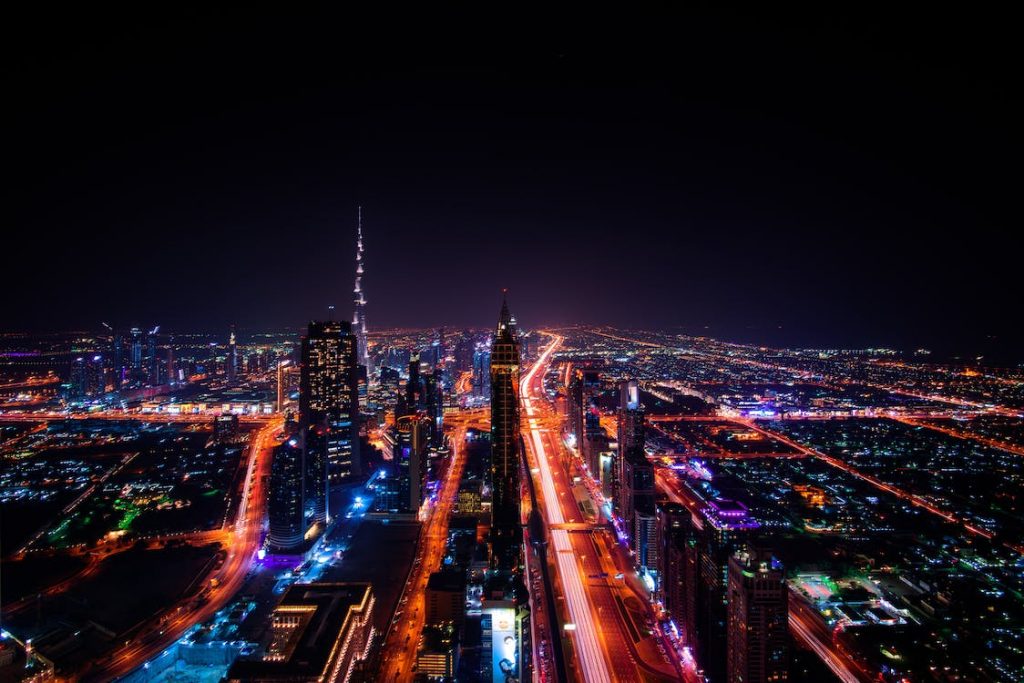Night photography stands out as a captivating and challenging niche that has been gaining immense popularity. As technology advances, capturing breathtaking scenes in low light has become more accessible, allowing photographers to unveil the beauty of the nocturnal world. Let’s dive into the essentials and techniques that make night photography a thrilling adventure.
Table of Contents
Introduction
Night photography involves capturing images in low-light conditions, typically after sunset and before sunrise. It opens up a realm of possibilities for photographers to explore the interplay of light and shadows in the dark.
In recent years, night photography witnessed a surge in popularity, thanks to advancements in camera technology and a growing community of enthusiasts. The challenge of working in low light intrigues many, pushing photographers to experiment with settings and techniques.
Despite its allure, night photography presents its set of challenges, including handling noise, managing exposure, and ensuring the safety of both the photographer and equipment.
Essential Equipment
High-Quality Camera
At the heart of any successful night photography venture lies a high-quality camera with exceptional low-light performance. Opting for a camera equipped with a full-frame sensor is crucial, as it allows for better sensitivity to light and improved image quality. The advanced noise reduction capabilities of such cameras play a pivotal role in producing clear and sharp images, even in challenging lighting situations.
Tripod for Stability
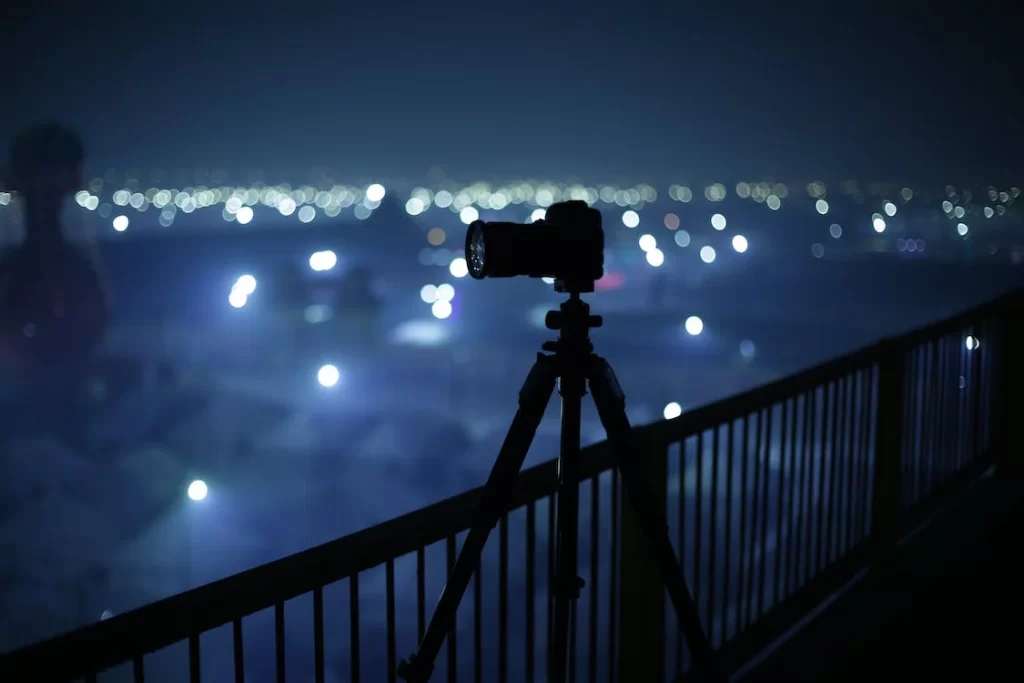
The importance of a sturdy tripod in night photography cannot be overstated. Given the longer exposure times necessary to capture sufficient light, a tripod provides the stability needed to prevent blurriness caused by shaky hands.
This is especially critical when photographing stationary subjects or when aiming for long-exposure effects like light trails or star trails. Investing in a high-quality tripod is an investment in the clarity and sharpness of your night shots.
Lens with Wide Aperture
Choosing the right lens is equally vital for successful night photography. Opt for lenses with wide apertures, characterized by low f-numbers. These lenses enable more light to reach the camera sensor, a crucial factor in low-light conditions. A wide aperture not only enhances the camera’s performance but also allows for creative control over depth of field, contributing to the overall aesthetic appeal of your night photographs.
Remote Shutter Release
It cannot be overstated how stability is of most importance in night photography. This is where a remote shutter release becomes an indispensable accessory. This device allows photographers to trigger the camera shutter without physically touching the camera. By eliminating any chance of camera shake during exposure, a remote shutter release ensures that your images remain crisp and free from the blurriness that can occur when manually pressing the shutter button.
Camera Settings for Night Photography
Achieving the perfect shot in night photography requires a mastery of camera settings tailored to the challenges posed by low-light conditions. Let’s explore the key camera settings that will help you capture clear, sharp, and visually stunning images when the sun goes down.

ISO Settings
ISO is a critical setting that directly impacts the sensitivity of your camera’s sensor to light. While a higher ISO setting allows for better performance in low light, it comes with a trade-off—introducing noise to your images. Finding the optimal balance is essential. Experiment with different ISO values to strike the right compromise between capturing enough light and minimizing unwanted noise. Many modern cameras offer advanced noise reduction features that can be employed during post-processing to further refine your images.
Aperture Adjustments
The aperture, expressed in f-numbers, is another key setting that night photographers must master. Experimenting with aperture allows you to control the depth of field and regulate the amount of light entering the lens. In the context of night shots, wide apertures, such as f/2.8 or lower, are often preferred. This allows more light to reach the camera sensor, facilitating better performance in low-light conditions. Additionally, a wide aperture enables creative control over the background blur, adding depth and visual interest to your night photographs.
Shutter Speed Considerations
Night photography often involves longer exposure times to capture sufficient light. Prolonged exposures can lead to overexposure, washing out details and colors. Conversely, too short a shutter speed may result in underexposed images lacking the necessary clarity. Experiment with different shutter speeds to strike the perfect balance. Consider the specific conditions of your scene, the available ambient light, and the creative effects you want to achieve.
Importance of Lighting
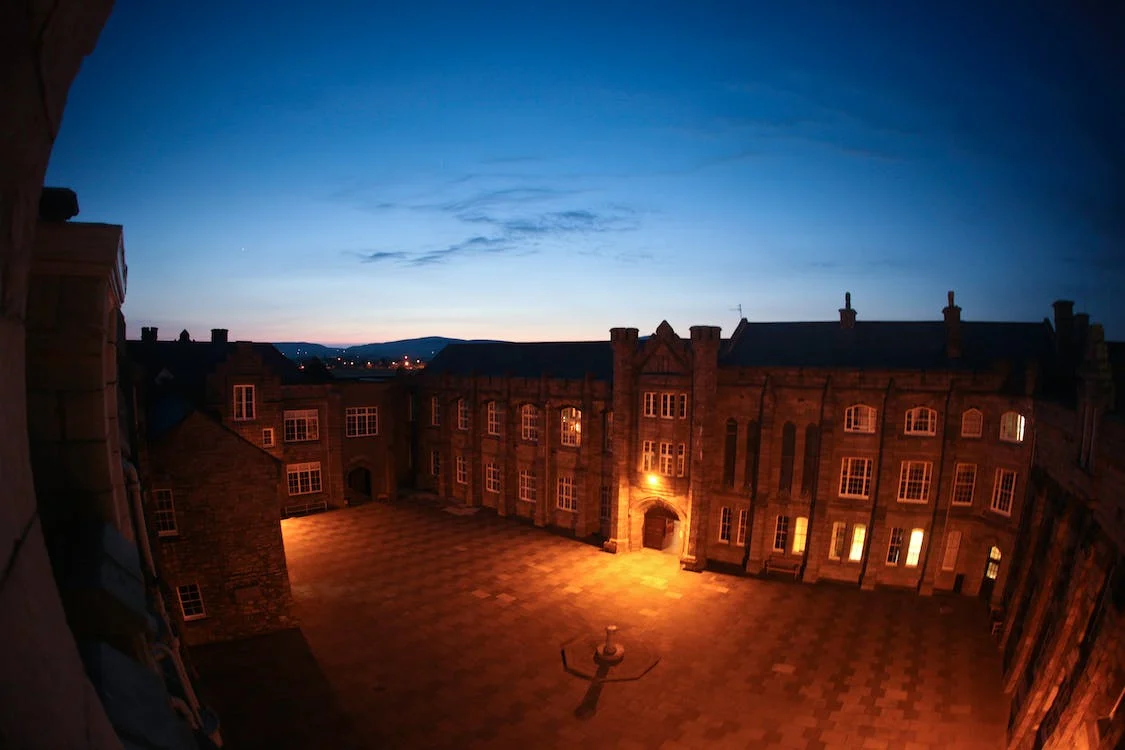
Natural Sources
The moon and stars become celestial partners, providing an ethereal glow to the surroundings. Understanding how these natural sources interact with the environment is key to enhancing the overall composition of your photographs.
Artificial Lighting Techniques
Using various artificial sources, such as streetlights, neon signs, and illuminated architecture, opens up a world of creative possibilities. These sources can cast unique and dramatic shadows, transforming ordinary scenes into vibrant nightscapes. The interplay of artificial lights with the darkness of the night sky creates a dynamic contrast, making your images visually compelling. As a night photographer, consider the color temperatures of different artificial lights, as they can influence the mood and atmosphere of your compositions.
Playing with Shadows
Experimenting with shadows allows you to sculpt your scenes, revealing hidden details and guiding the viewer’s gaze. Whether cast by natural or artificial light, shadows can transform a flat composition into a visually captivating narrative. Pay attention to the direction and intensity of shadows, and use them to your advantage in creating compositions that evoke emotion and intrigue.
Editing Night Photographs

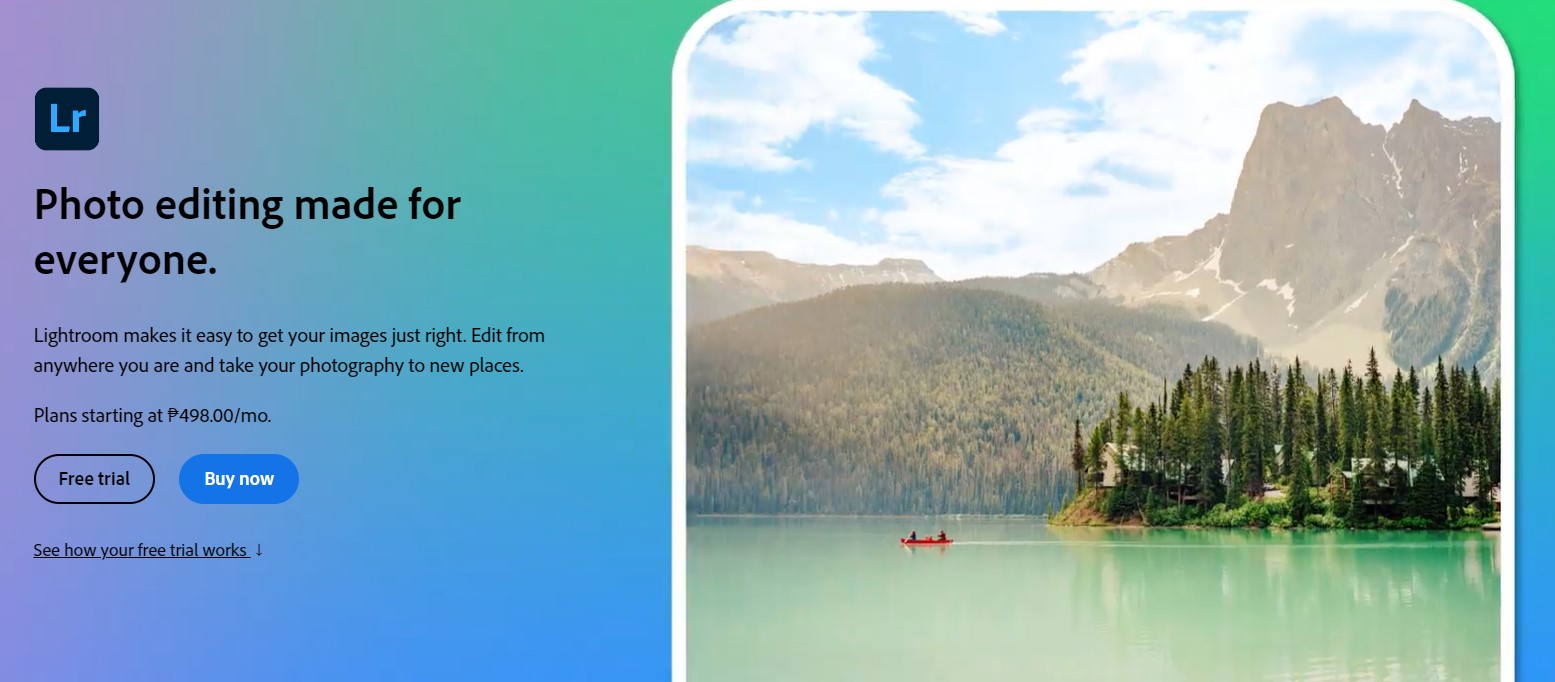
Software Options
When it comes to post-processing in night photography, industry-standard software like Adobe Lightroom and Photoshop stands out. These tools offer a comprehensive suite of features designed to enhance, refine, and perfect your images.
In Adobe Lightroom, you can manipulate exposure, adjust color balance, and reduce noise, while Photoshop provides advanced tools for detailed retouching and creative editing. The combination of these software options empowers photographers to take their night images from raw captures to polished masterpieces.
Adjusting Exposure and Contrast
One of the primary goals in post-processing night photographs is achieving a well-balanced exposure and contrast. Careful adjustments during this stage can bring out intricate details hidden in both shadows and highlights. Adjusting exposure ensures that no essential elements are lost in darkness or washed out by excessive brightness. Concurrently, fine-tuning contrast adds depth to your images, enhancing the overall visual appeal. The interplay of light and dark becomes more pronounced, contributing to the narrative and mood of the photograph.
Enhancing Colors in Low Light
This step is particularly impactful in urban landscapes where artificial lights mingle with the darkness of the night. Vibrant and saturated colors can transform a mundane scene into a visually striking masterpiece. Experiment with color balance, saturation, and vibrance to find the right combination that brings out the richness and depth of hues in your night photographs.
Read more: Low Light Photo Editing: Guide to Enhancing Your Dark Images
Safety Considerations
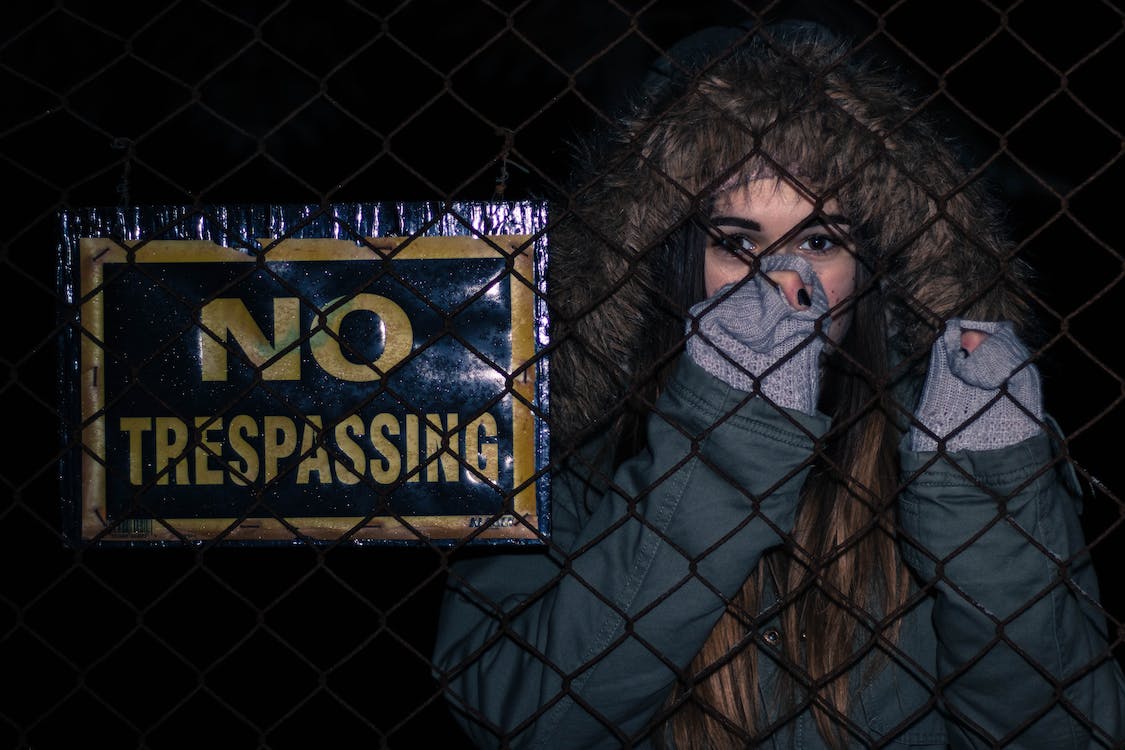
Choosing Safe Locations
Night photography often involves venturing into unfamiliar places. Prioritize safety by selecting well-lit and secure locations for shooting.
Being Aware of Surroundings
Maintain awareness of your surroundings, especially in secluded areas. Carrying a flashlight can be valuable for both composition and personal safety.
Carrying Essential Gear
Aside from camera equipment, consider carrying essentials like water, a first aid kit, and weather-appropriate clothing, especially when shooting in remote locations.
Inspiring Night Photography Ideas
Urban Landscapes
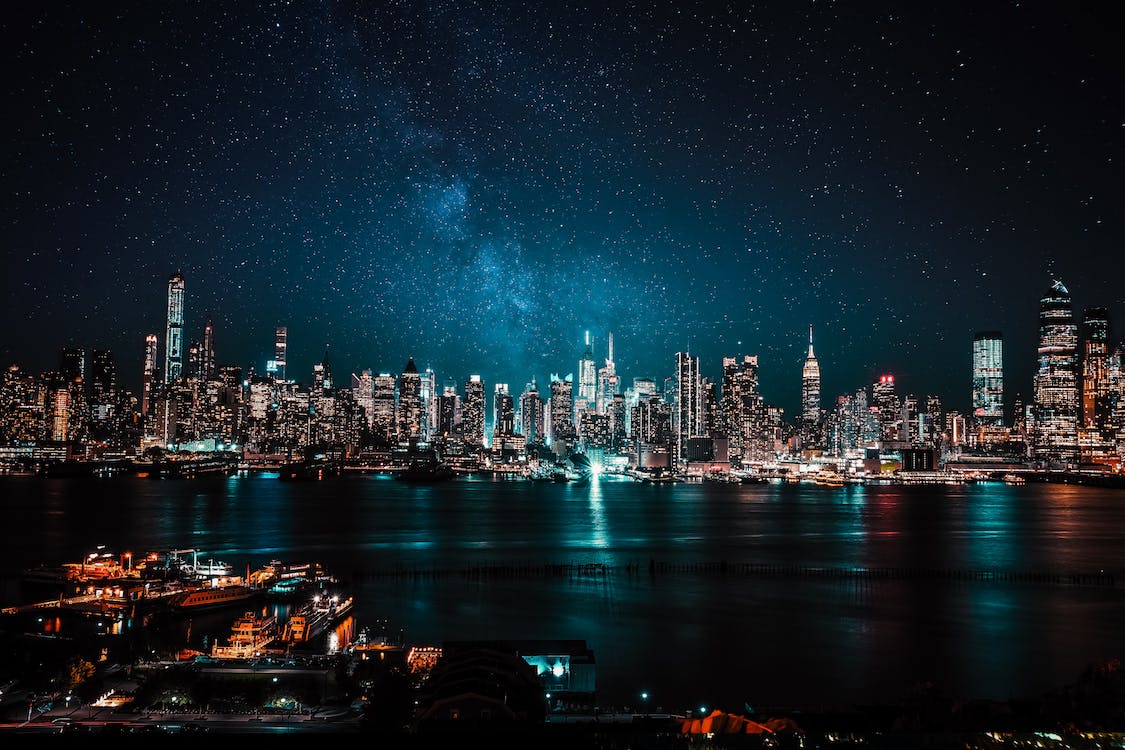
Capture the vibrant energy of cityscapes at night. Experiment with reflections, light trails, and the juxtaposition of modern architecture against the night sky.
Star Trails and Astrophotography
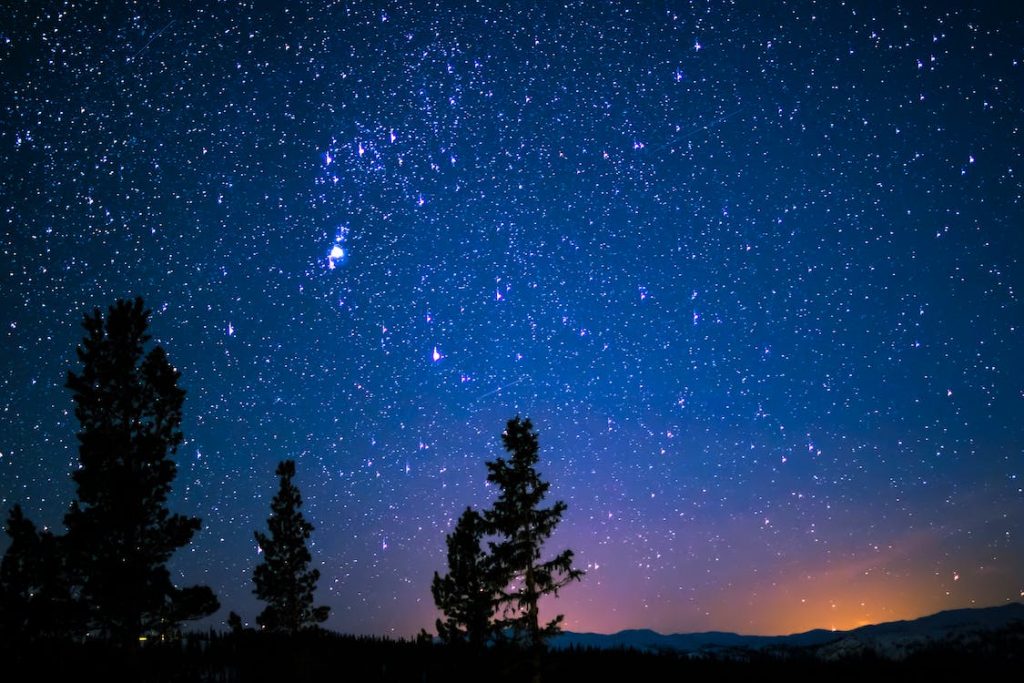
Venture into astrophotography by capturing the mesmerizing trails of stars. Long exposure techniques unveil the beauty of the night sky and distant galaxies.
Creative Light Painting
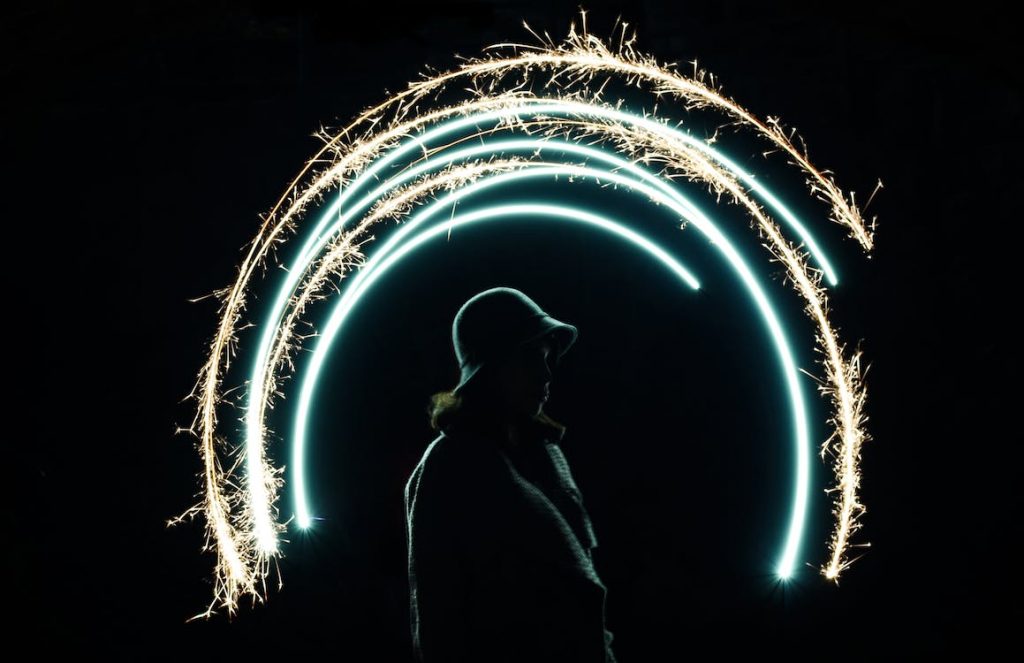
Engage in the art of light painting by using handheld light sources to paint and illuminate specific elements in the frame. This adds a touch of magic and creativity to night photographs.
Conclusion
Night photography is a captivating art form that demands skill, creativity, and a love for exploration. Capturing breathtaking scenes in low light is not just about the absence of sunlight. It’s about revealing the intricate details and emotions that come alive in the dark. Armed with the right equipment and techniques, photographers have the ability to showcase the hidden beauty of the night.
FAQs
Is night photography only for experienced photographers?
Night photography is accessible to photographers of all levels. While some techniques may require practice, beginners can capture stunning images with basic equipment.
How do I deal with noise in night photographs?
Utilize noise reduction tools during post-processing to minimize noise while preserving image quality.
Are there specific safety considerations for night photography?
Choose well-lit and secure locations, stay aware of your surroundings, and carry essential gear for personal safety.
Can I capture star trails with a basic camera?
Yes, capturing star trails is possible with a basic camera. Use a sturdy tripod and experiment with longer exposure times.
How can I get started with night photography as a hobby?
Start by familiarizing yourself with your camera settings, investing in a tripod, and exploring well-lit urban areas. Joining photography groups can provide valuable guidance.
Afterword
We hope that you find this article helpful. Thank you for reading and you’re always free to leave a comment. If you find this article interesting, consider checking out one of our recently published posts. A few of them showcase advancements in technology such as AI Art Generators. On the other hand, if you’re looking towards Photography, we also offer great articles for your inspiration. We also have multiple articles that talk about the various printing mediums for wall art. May these articles give you inspiration for your next print!
Find them here:
Discover the Secret to High-quality Canvas Prints
The 9 Best Canvas Print Companies in 2023
Acrylic Prints: Add Vibrance to Any Space
The Top Food Photography Trends to Try Now
The Ultimate Guide to Continuous Lighting for Photography
Stable Diffusion Tips and Tricks
Best AI Art Generator for Android Phones 2023
We enjoy reading your comments and insights with our posts! Should you have any questions or concerns, feel free to leave them below! -Mark

